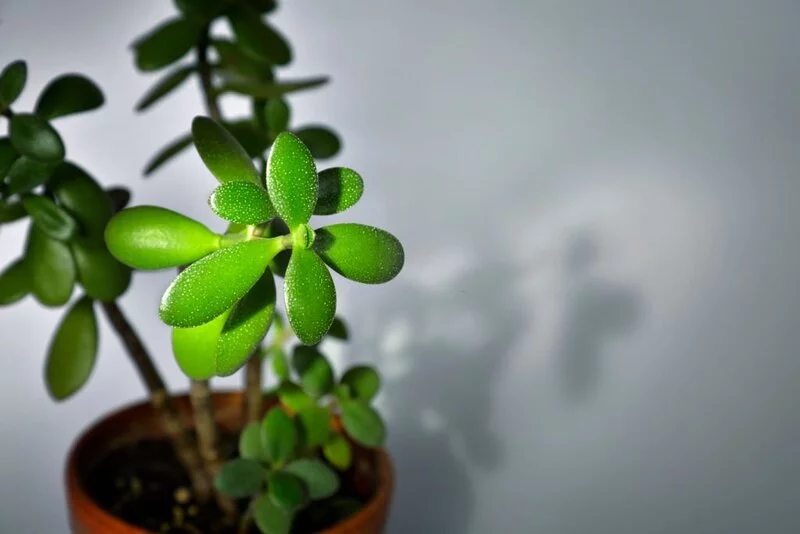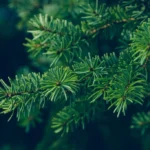Hello, fellow plant parents! If you’re reading this, it’s likely because your once sprightly jade plant is now looking a bit, well, down. Drooping jade plants are a common sight in the indoor gardening world, but that doesn’t make it any less disheartening. After all, jade plants, with their shiny, oval leaves and woody stems, are usually the picture of resilience. But fear not, because we’re here to help you diagnose and treat your drooping jade. So, let’s dive right in!
- Miracle-Gro Succulent Plant Food is formulated for indoor succulent plants
- This liquid plant food feeds plants instantly
- Use with indoor succulents, including cacti, jade plants, prickly pear, aloe vera, moonstones, zebra plants, and more
- Apply this food for succulent plants directly to the soil, or mix 8 pumps of plant food with 1 quart of water and water as usual
- For even more spectacular results, use Miracle-Gro Succulent Plant Food with Miracle-Gro Cactus, Palm & Citrus Potting Mix
Common Causes of Drooping Jade Plants
Jade plants droop for a variety of reasons. The key is to think of your jade plant like a mini detective case. It’s all about finding clues and identifying the culprit behind the drooping leaves. Here are some of the usual suspects:
- Overwatering or Underwatering: Yes, both too much and too little water can lead to a drooping jade plant. Overwatering can cause root rot, while underwatering can leave your plant dehydrated. Both situations result in a sad, drooping jade plant.
- Incorrect Lighting Conditions: Jade plants love light. If your jade isn’t getting enough bright, indirect sunlight, it might show its displeasure by drooping.
- Poor Nutrition: Jade plants don’t ask for much, but they do need some essential nutrients to stay strong. A lack of nutrients can lead to a weak, droopy plant.
- Pest Infestations: Small bugs like spider mites or mealybugs can suck the life out of your jade plant, causing it to droop.
- Disease: Diseases, particularly fungal ones, can cause your jade plant’s leaves to droop and eventually fall off.
Remember, every plant is unique, and what works for one might not work for another. The key is to carefully observe your plant and its conditions, and use that information to pinpoint the cause.
- Crassula Jade Live Succulent Plant
Identifying the Root Cause
So, how do you play detective with your drooping jade plant? The first step is to take a good, hard look at your plant. Check the leaves, stems, and soil. Are the leaves yellow or mushy? That’s a classic sign of overwatering. Are the leaves wrinkled and dry? That could mean underwatering. Small dots or web-like structures on the leaves could indicate pests.
Next, consider the environment. Has there been a recent change in light, temperature, or humidity? Jade plants like stability and sudden changes can cause them stress, leading to drooping.
Also, think about your care routine. How often are you watering, and how much? When was the last time you fertilized? A little introspection can often lead you to the answer.
Solutions for a Drooping Jade Plant
Once you’ve identified the likely cause, you can take action to help your jade plant stand tall again. Here are some remedies:
- Adjusting Watering Routines: If you’re overwatering, allow the soil to dry out completely before watering again. If you’re underwatering, increase the frequency of watering, but do so gradually.
- Modifying Light Conditions: Move your jade plant to a spot where it gets plenty of bright but indirect light. Just be careful not to expose it to harsh, direct sunlight, which can burn the leaves.
- Improving Soil Nutrition: Feed your jade plant with a balanced, water-soluble fertilizer every few months. Make sure to follow the instructions on the label.
- Pest and Disease Management: If pests are the problem, you might need to use an insecticidal soap or a similar treatment. For diseases, remove the affected parts and treat with a fungicide if necessary.
Remember, patience is key when it comes to plant care. It might take some time for your jade plant to bounce back, but with consistent care, it will eventually regain its strength and perk up.
- 100% NATURAL: Special soilless blend for the plant also known as “friendship plant”, “money plant” or “silver dollar plant”
- USES: For planting or repotting Jade Plants and other indoor / outdoor succulents
- Benefits: Organic humus, coarse, drainage, aeration, and nutrient retention
- Ingredients: Coconut coir, pine bark, worm castings, horticultural charcoal, and horticultural perlite
- Size: 8 quarts (enough for a big 12-inch pot)
Preventing Future Drooping in Jade Plants
Alright, now that we’ve got your jade plant back on its feet, let’s make sure it stays that way. Here are some best practices to prevent future drooping:
- Water Wisely: Jade plants prefer a ‘soak and dry’ method. Water thoroughly, then allow the soil to dry out completely before watering again. This mimics their natural desert environment.
- Light It Right: Ensure your jade plant gets plenty of bright, indirect light. A south or west-facing window is ideal.
- Feed It Well: Feed your jade plant with a balanced fertilizer every few months to keep it healthy.
- Keep an Eye Out: Regularly check your plant for signs of pests or disease. Early detection makes treatment easier and prevents the problem from spreading.
Conclusion
And there you have it, a comprehensive guide to diagnosing and treating a drooping jade plant. While it might seem a bit daunting, remember that every plant parent encounters challenges along the way. It’s all part of the journey of growing and learning with your plants. So don’t be discouraged if your jade plant droops. Instead, see it as an opportunity to better understand your plant and its needs. After all, a happy, healthy jade plant is a testament to your growth as a gardener. Keep nurturing, keep growing, and let your jade plant stand tall and proud!






